

Matt Campbell
2025 Porsche 911 Carrera T review
6 Days Ago
Volkswagen is revealing four concept versions of its ID. Buzz at the 2022 IAA Transportation show to display how versatile the EV is.
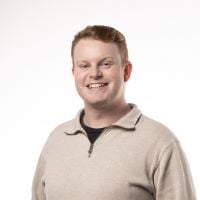
Contributor
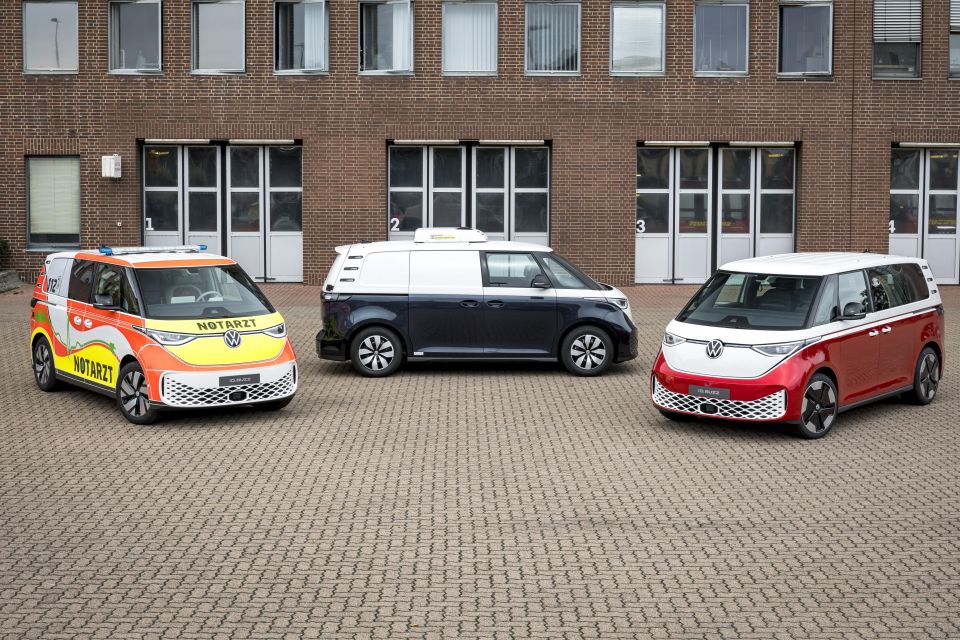

Contributor
Volkswagen vans have served as a blank canvas for their owners since the Kombi, acting as everything from free-love hippie wagons in California to Ambulances in Germany. That doesn’t look likely to change in the electric era.
These four Volkswagen ID. Buzzconcepts form part of the 30+ vehicles the German carmaker is displaying at the commercial vehicle motor show, and show how the new-age Kombi can be modified for different industries.
The first of the four ID. Buzz concepts has been customised by German commercial vehicle modification company Bösenberg to be an ambulance.
This ID. Buzz ambulance concept has room for up to three people, with the cargo area being converted into a workplace for a paramedic and their medical equipment.


There’s also a special signalling system (lights and sirens) incorporated into the concept running on a separate battery system to the drive motors.
The next ID. Buzz concept is referred to as theID. Buzz Flex-Cab concept, and is essentially an ID. Buzz Cargo that’s been fitted out for passenger transport use. Think of it as an airport shuttle taxi.
Volkswagen notes this ID. Buzz concept is basically an electric version of the Caravelle people mover.
The Volkswagen ID. Buzz Flex-Cab concept has been customised by Dutch commercial vehicle modification company Snoeks and features a three-person rear bench seat, as well as rear air-conditioning.

The rear bench seat can be positioned in two different ways – standard or with extra legroom – and can be folded up with the seat base included. This is all adjusted electrically through a switch on the B- or D-pillars.
The third concept Volkswagen is showing off at this year’s IAA Transportation show is an ID. Buzz Cargo with a box body that would be best suited for courier drivers.
Thanks to the rear box, load capacity is claimed to be 6.0m, which is over 2m more than the standard ID. Buzz Cargo.
The sides and back of the box can be fitted with conventional doors, sliding doors, or roll-up shutters.

The concept being shown off at IAA is fitted with a door on the passenger’s side, as well as shutters on the driver’s side and large wing doors at the back. Inside, the box is fitted with a non-slip floor.
The fourth and final ID. Buzz concept has been customised by German commercial vehicle modification company Wükaro to be a refrigerated vehicle. It was designed specifically for ‘last-mile’ logistics in urban areas.
The cooling system consists of a low-profile 230V cooling unit on the roof, four 100Ah lithium-ion batteries, and an inverter with an integrated battery charger.
The concept vehicle can, depending on specification, take a payload of up to 390kg.
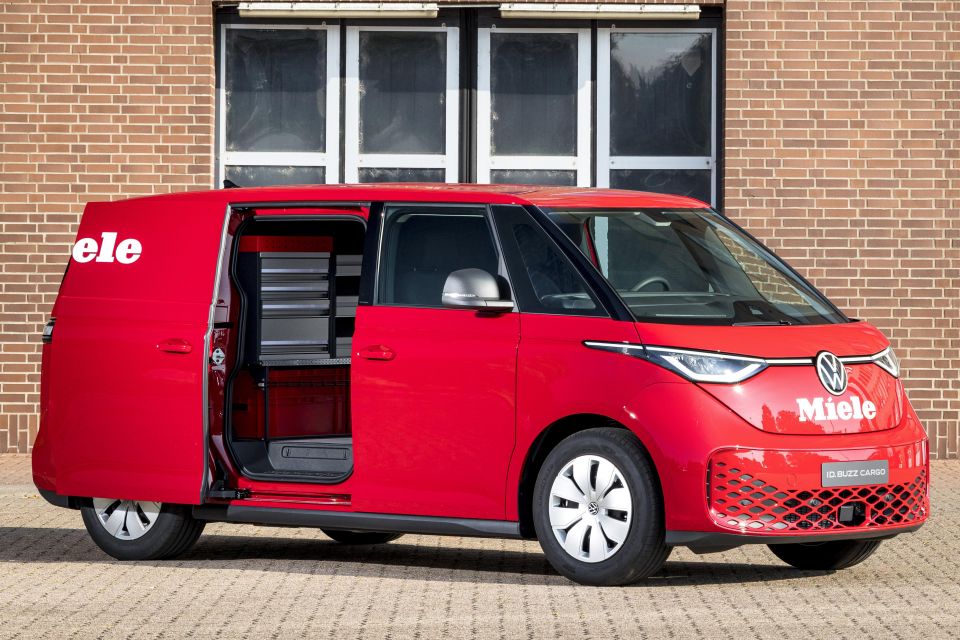
It’s also possible to pre-chill the cargo space when the refrigerated ID. Buzz Cargo concept is connected to the mains.
In addition to four ID. Buzz concept vehicles, Volkswagen is showing off Miele ServiceVan version of the ID. Buzz that’s been fitted out with spare parts and tools for Miele customer service personnel.
There’s an integrated folding table in to centre console which can act as a workspace for the driver in the passenger compartment.
Despite series production of the regular ID. Buzz starting in May, Volkswagen has yet to lock in launch timing for the ID. Buzz for Australia – though it’s high up on the wish list.
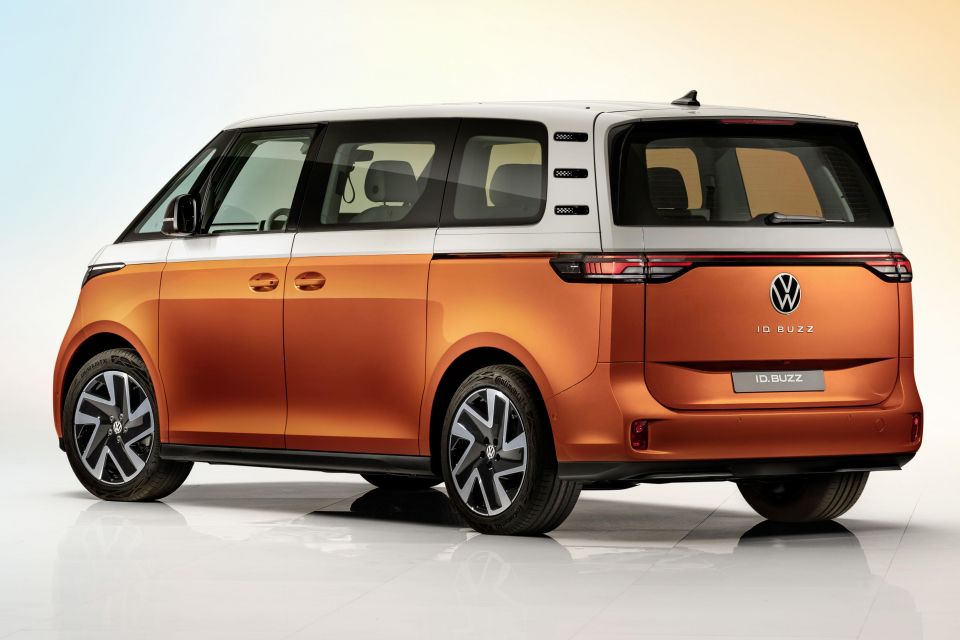
Volkswagen Group Australia has maintained the delayed launch of its first VW-branded electric vehicles here is in part due to demand in other markets and a lack of emissions standards here, pushing us down the priority queue.
We’ll be waiting until late 2024 at the earliest to see the ID. Buzz and its ID. Buzz Cargo van counterpart in Australia.
“We’re constantly talking to not only local government, but fleet customers about what our future looks like for electric vehicles, because it’s in high demand, they want to move that way sooner [rather] than later,” said Volkswagen Commercial Vehicles Australia brand director Ryan Davies recently.
“ID. Cargo is firmly on our radar as well as ID. Buzz, [but] probably the earliest we could anticipate selling it is late 2024.
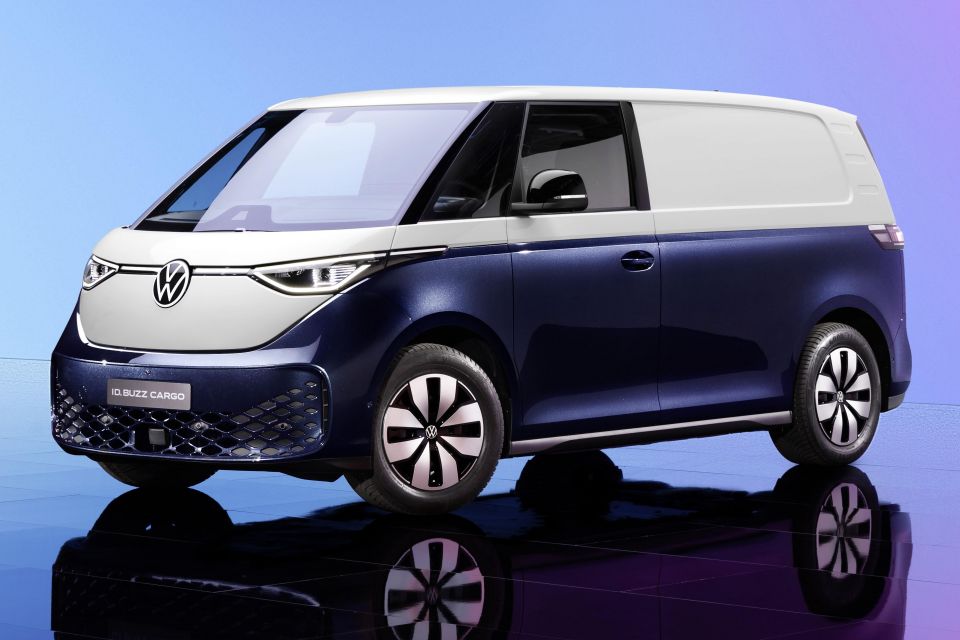
“We have big aspirations in terms of volume for that car, so we are confident that we’re going to get it. With what we have put on the table, with what we can achieve here from a volume perspective, we think the factory would be pretty happy with that appetite.”
While there aren’t many all-electric vans currently available – the outgoing Kangoo Z.E being the sole option – there’s definitely fleet demand and an array of options coming soon.
Earlier this week we received details on the Mercedes-Benz eVito. Ford is bringing the e-Transit (2023) and smaller e-Transit Custom (2024) to Australia, and Renault is bring the Kangoo E-Tech (2023) and the larger Master E-Tech (2024).
Peugeot has indicated it sees a market for electric vans it offers in Europe locally, and we’re expecting China’s LDV to announce an electric Deliver 9 for this market soon.
MORE: 2022 Volkswagen ID. Buzz series production starts MORE: Volkswagen ID. Buzz and Cargo EV vans in high Australian demand
Where expert car reviews meet expert car buying – CarExpert gives you trusted advice, personalised service and real savings on your next new car.
Jack Quick is an automotive journalist based in Melbourne. Jack studied journalism and photography at Deakin University in Burwood, and previously represented the university in dance nationally. In his spare time, he loves to pump Charli XCX and play a bit of Grand Theft Auto. He’s also the proud owner of a blue, manual 2020 Suzuki Jimny.


Matt Campbell
6 Days Ago


James Wong
5 Days Ago


Max Davies
3 Days Ago


Josh Nevett
2 Days Ago


Josh Nevett
2 Days Ago


Paul Maric
18 Hours Ago